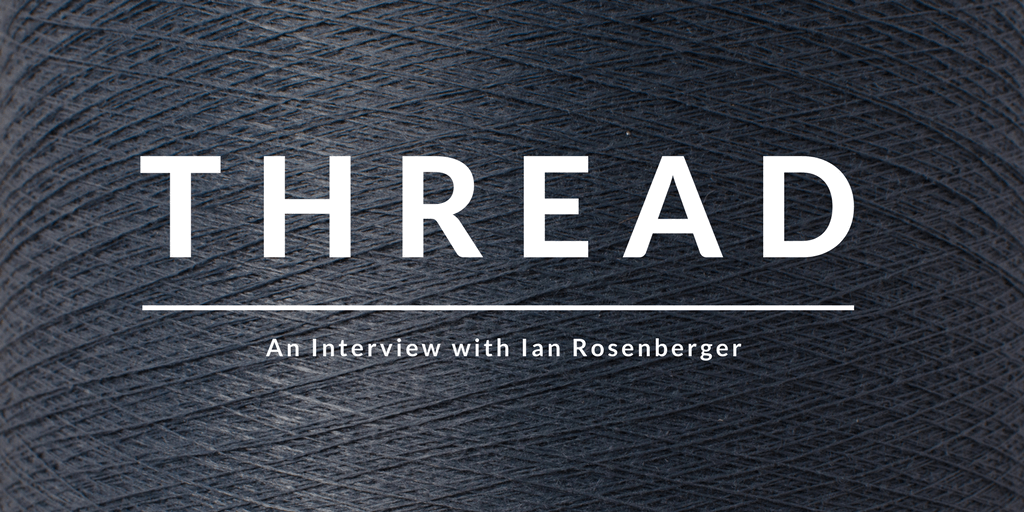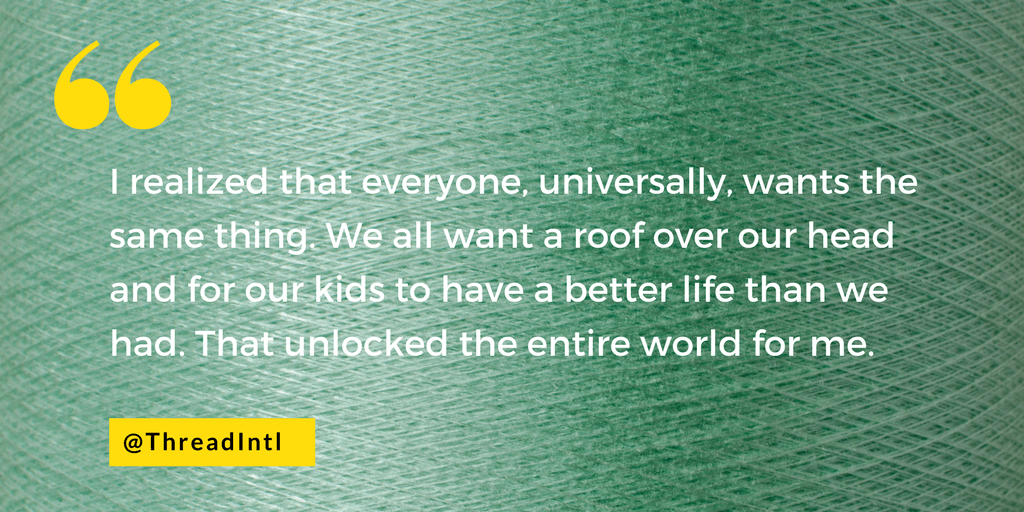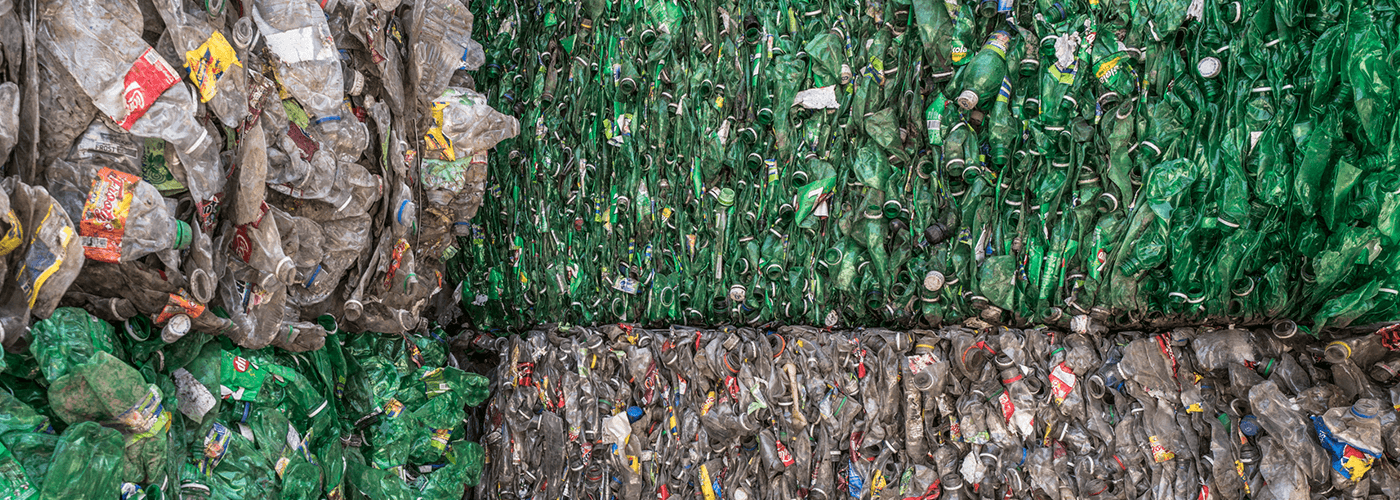The clothing industry is the second largest polluter in the world; only oil contaminates more. “Fast fashion” emphasizes getting the latest trends from catwalk to consumer as fast and as cheaply possible. This perspective on the clothes we wear every day devalues the materials, mistreats the laborers, and obfuscates the supply chain.
Thread is bringing transparency and fair treatment back into apparel by producing fabrics transformed from plastic bottles found in the streets of some of the poorest communities on the planet. More importantly, this company is on a mission to end poverty by creating dignified jobs alongside nonprofit partner Team Tassy – their stories inextricably linked after the devastating earthquake in Haiti in 2010.
The clothing industry is the second-largest polluter in the world; only oil contaminates more. Tweet This Quote
Today, over 1,300 Haitians collect the plastic bottles that become Thread™ fabric. Each yard of fabric is tracked from the “first mile” to the last, where it winds up in the products of global brands seeking smarter sustainability practices. According to its most recent Impact Report, Thread created 3,845 income opportunities in Haiti and Honduras and exported over 378,000 pounds of plastic waste in 2016 alone.
Most recently, Thread launched its new collection with Timberland called Thread X Timberland. The shoes, t-shirts and bags incorporate Thread’s fabric and tell the story of what it means to go from Ground to Good™ and reframe what it means to be fashionable.
Unreasonable sat down with Ian Rosenberger, founder of Team Tassy and Thread, to discuss why he went to Haiti in the first place, how he formed his philosophy on poverty, and why we need an apparel revolution.

What emotion or feeling made you decide that you had to go to Haiti after the earthquake in 2010?
Ian: It’s so hard to say. When 9/11 happened, I felt I wanted to go to New York City. I just felt like I could be useful. I didn’t go, and I regretted it. I told myself when something like that came along, I was never going to let myself regret that again. So when the earthquake in Haiti happened, and that was nine years later, I said I’m going. It’s all about timing. Everything that had happened up to that point brought me to January 12, 2010.
I had to kind of throw away all the things that I knew. Like, I knew I probably wasn’t supposed to go, and I would probably be a pain in the ass and be in the way. But it felt like I had the permission from myself to go. I wasn’t going with any intention of starting a business; I just wanted to figure out how to help.
How did that experience lead to Team Tassy? How did you meet Tassy?
Ian: On the last day, there was this kid I met. He hopped into the back of the truck that I was in, heading to his local church, which at the time was this old burned out gas station. This kid had this huge tumor on his face. I mean, the size of a grapefruit. At first, I didn’t think anything of it. I thought it was a birth defect. Later I learned that it started growing when he was 12, and at the time he was 17, and it turned out he was dying from it. I asked why, and he just didn’t have access to healthcare. He didn’t have access to a regular check-up. His name was Tassy.
Two weeks after that first trip, I went back to Haiti. Tassy asked me for help. I said yes. At the time, I had no clue how I was going to help him. So I came home and tried to figure out what he had. That’s kind of what kicked things off.
We have to reverse the idea that the cheapest is the best. Tweet This Quote
I took my slides to this fancy country club in Pittsburgh. I finished the presentation and sat at the bar. At this time, I was in pretty terrible shape. A guy game up to me and asked me what I need. I said, “Well, what I really need is an ear, nose and throat surgeon who can operate on this guy’s tumor. And he was like, “I’m an ear, nose and throat surgeon.”
So, I went back to Haiti the next week, and I took Tassy to the U.S. Embassy and got him a refugee visa. Two weeks later, he was living in my apartment with my roommate, my basset hound and me – and he got the operation. He lived with me for 13 weeks, and I took him home to Haiti after that. That’s when I realized the entire experience was selfish. I wanted to make myself look good. This whole exercise was an exercise in vanity, and I was really disappointed in myself for that. I decided to stick with Tass until Tass didn’t need me anymore. That begged the question, what does it mean for the poor not to need you anymore? What does being poor mean?

Did you find the answer to that question?
Ian: I spent about a year trying to figure that out. In the process, what I realized was that people want the same stuff. Everyone, universally, wants the same thing. We all want a roof over our head and for our kids to have a better life than we had. That unlocked the entire world for me. That’s when I realized that Tassy not needing me anymore meant having a decent job.
So I created my philosophy around the poor that led me to start Team Tassy, which places the poorest of the poor into jobs in the worst neighborhoods we can find. But in Haiti, it’s like 70 percent unemployment. Everybody was homeless. There weren’t any jobs to go around.
That’s when I went back to my journal, and I wrote: “If Haiti could turn trash to money = good.” I kept rotating around the idea. I thought, maybe I’ll try to convince Patagonia to build a factory here. That was the idea for a long time. Finally, I was like, why don’t I just do it myself? For the first time, I decided I was going to start a company because we needed to create some jobs.


